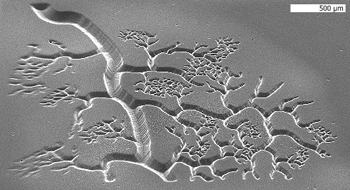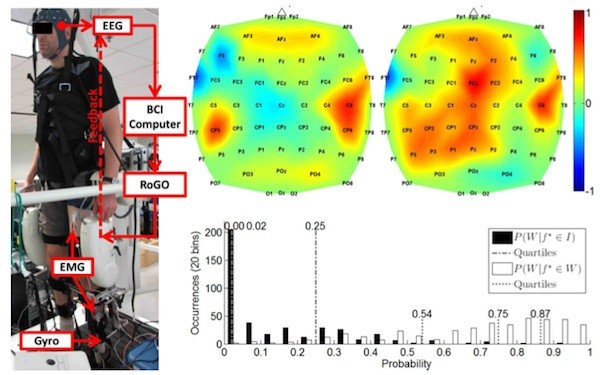
Science Concludes Lumberjacks Are More Manly Than Sports
A pair of Anthropologists from the University of California, Santa Barbara have answered the lifelong question of masculinity, chopping down trees is a more manly activity than sports. Who needs to be competitive when you could be a lumberjack!
Nanoengineers Show It's Possible To Print 3D Microstructures In Seconds

Once just a pipe-dream - the like of which our favourite science-fiction shows made their own - nano-engineers at the University of California have managed to create technology that can replicate micro-scale 3D structures out of bio-compatible hydrogels, and it can all be done in seconds, paving the way toward 'printable' body tissue.
World's First Mind-Controlled Robotic Legs Demonstrated

A pair of robotic legs controlled solely by the user's mind have been successfully demonstrated by Researchers at the Long Beach Veterans Affairs Medical Centre and the University of California. This brings new potential to the future of prosthetic limbs for paraplegic people.
Scientists Researching A Drug That Will Keep You Sober

Like the regular twenty-somethings we are, we have to admit we're not averse to the odd night out on the town. But if there's one down side to getting merry on the juice, like any binge drinker will tell you, it's the dreaded hangover the next day that makes it all seem pointless, ill thought out, superficial if you will – besides the notes in your wallet somehow miraculously disappearing in the night.
Scientists Uncover Method To Literally 'Read' Human Thoughts

Researchers from the University of California have developed a remarkable method that has allowed them to discern what a patient is thinking through de-constructing their associative brain waves. While still incredibly early in its potential implications, such a method of interpreting someone's thoughts without the need for speech to be crafted could be hugely significant for loved one's and medical staff to communicate with those who are unable to speak; such as comatose patients, or those suffering with 'locked-in syndrome'.
US engineers unveil world's 'lightest material'

From the laboratories of the University of California, the material is made out of miniscule hollow metallic tubes arranged into a diagonal criss-cross pattern, leaving no wasted space and not compromising weight, while also maximizing energy absorption. All of this adds up to what the researchers call a material that is 100 times lighter than styrofoam: having a density of 0.9 milligrams per cubic centimetre.

